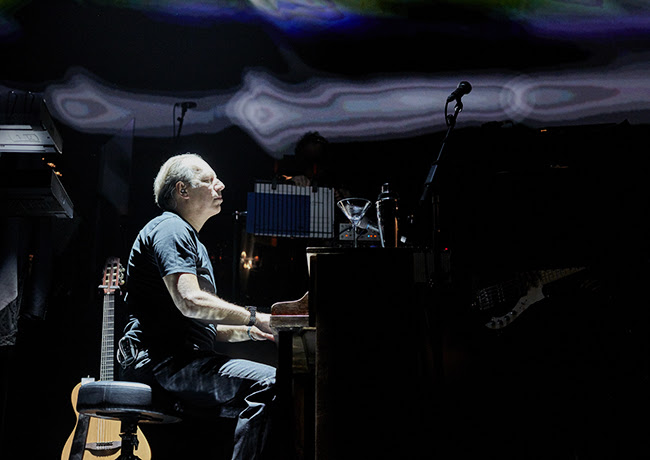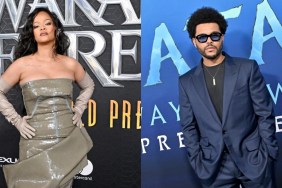Hans Zimmer has composed more than 100 film scores. Over the past decade his name has become synonymous with the foreboding orchestral tension that typifies Christopher Nolan films, but the German composer’s oeuvre is varied, taking in dramas and rom coms, thrillers and animated musicals, road movies, documentaries and superhero blockbusters.
As a result of regular collaboration with directors Nolan, Ron Howard, Tony Scott, James L. Brooks, Ridley Scott, and Gore Verbinski, Zimmer has become one of the best-known film composers of all time. And while he’s now recognised for grand orchestral solemnity, his career beginnings are comparatively humble.
After relocating to London from his native Germany as a teenager, Zimmer got involved in the late-70s new wave scene, hooking up with The Buggles, the Damned and Shriekback, before landing a gig constructing advertising jingles. His first foray into film scoring came alongside established composer Stanley Myers, working on Stephen Frears’ 1985 cult favourite, My Beautiful Laundrette. From that point onwards Zimmer’s soundtrack efforts have been ceaseless.
With Zimmer touching down for an Australian arena tour this week, we’ve selected ten essential Hans Zimmer movie soundtracks from the 1980s through to the present day.
Rain Man (1988)
Zimmer’s first non-collaborative feature film score was for the anti-apartheid drama, A World Apart, in 1988. This caught the attention of Diana Rhodes, the wife of American filmmaker Barry Levinson, who reached out to Zimmer to his score future Oscar winner, Rain Man.
Zimmer told Entertainment Weekly that he tried not to be any bigger than the characters. As such, the film’s musical component bears little of the composer’s trademark maximalism. The score revolves around steel drums and Zimmer’s manipulation of a Fairlight CMI – a three-in-one synthesizer, sampler and DAW unit. It was only the second of its kind ever made, which Zimmer hired from Bad Company’s Boz Burrell.
Thelma & Louise (1991)
Zimmer’s longstanding collaboration with Ridley Scott began with the 1991 buddy road flick, Thelma & Louise. To execute its theme, Zimmer brought in one of his early idols, Pete Haycock of the Climax Blues Band.
Haycock’s slide guitar playing forms the crux of Zimmer’s ruminative theme, ‘Thunderbird’, which contains murmurs of the emotional palette that would dominate his later work – the guitar line inhabits a minor key scale; a momentary lift comes courtesy of some major synth chords, but ‘Thunderbird’ evades a pleasant resolution.
The Lion King (1994)
Although Elton John and Andrew Lloyd Webber-collaborator Tim Rice wrote The Lion King’s most famous songs – ‘Can You Feel the Love Tonight’, ‘Hakuna Matata’ and ‘I Just Can’t Wait to Be King’ – Zimmer’s original score makes a significant contribution to the film’s emotional pull.
Zimmer told Vanity Fair that he only accepted the job so he could show off to his six-year-old daughter, but was soon moved by the father and son relationship at the centre of the plot. Many of his compositions, including ‘This Land’ and ‘King of Pride Rock’, were written with South African musician Lebo M and safely evade kitsch, suggesting children shouldn’t be deprived of art music.
The Thin Red Line (1998)
Terrence Malick’s The Thin Red Line was a notoriously convoluted production. The enigmatic auteur’s first film in 20 years originally ran for nearly five hours. When it was cut down to 170 minutes, performances from Bill Pullman and Mickey Rourke, and narration from Billy Bob Thornton, were scrapped entirely.
Zimmer composed four hours of music before shooting had even begun, which Malick played on set to orientate the cast and crew. Much of Zimmer’s score was also cut from the completed film, but its centrepiece would change the course of his career. ‘Journey to the Line’ is an emergent sting composition that gradually expands like an endless chain of fabric being retrieved from a clown’s pocket.
It has since been used in trailers for films such as 12 Years a Slave and X-Men, and entering the 2000s, the piece’s cresting character led to Zimmer becoming the tone-setter of choice for heroic Hollywood epics.
Gladiator (2000)
Set in AD 180 and centred on the downfall and resurgence of a bloodthirsty Hispano-Roman general, you’d be right in thinking Gladiator doesn’t pass the Bechdel test. The soundtrack, however, is defined by a woman’s voice, that of Lisa Gerrard from neoclassical art rock duo, Dead Can Dance.
Nowhere else in Zimmer’s catalogue is a soundtrack co-credit given to a vocalist, but these otherworldly compositions couldn’t have attained such singularity without Gerrard’s amorphous idioglossia. For an example of the soundtrack’s paranormality, look no further than ‘Now We Are Free’, which features a sprouting string section not dissimilar to ‘Journey to the Line’.
Pirates of the Caribbean: At World’s End (2007)
Despite working with Gore Verbinski on The Ring, Zimmer was reluctant to sign on for the director’s next project, the swashbuckling Pirates of the Caribbean. After seeing an edit of The Curse of the Black Pearl, however, Zimmer volunteered to produce the soundtrack.
He took over scoring duties for act two, Dead Man’s Chest, but the cream of the crop is the third film, At World’s End. Zimmer’s score possesses an orchestral grandiloquence befitting the sordid, larger than life quality of the film’s main characters. It’s impossible to hear the sleazy symphony, ‘Drink Up Me Hearties Yo’, without visualising Johnny Depp’s swashbuckling Jack Sparrow sailing over the horizon.
The Dark Knight (2008)
Over the course of six blockbuster films, Zimmer became an indispensable offsider to director Christopher Nolan. The pair’s first project was 2005’s Batman Begins, which rejigged the parameters for what a superhero film could achieve. The artistic and cultural highpoint of The Dark Knight Trilogy is the eponymous 2008 film.
Nolan was determined to make something with genuine emotional depth and psychological intrigue, and Zimmer was just the man to assist. The Batman’s theme – featured prominently in ‘Like a Dog Chasing Cars’ – purposely skirts the cartoon-like convention for superhero themes; Heath Ledger’s career defining performance as The Joker is given suitable backing in the form of Zimmer’s ‘Why So Serious?’, a chugging, violent work made up cello, violin and guitar.
Inception (2010)
A succinct encapsulation of Inception’s central narrative is difficult to form, but essentially the film’s main characters descend through dream levels to extract information from others’ subconscious. To prevent things going awry, the characters employ “kicks” to wake themselves up and to help coordinate the kicks, they use the Édith Piaf song ‘Non, Je Ne Regrette Rien’.
Zimmer’s score is largely built around Piaf’s original recording. In fact, Zimmer told the New York Times that, “all the music in the score is subdivisions and multiplications of the tempo of the Édith Piaf track.” His sampling and manipulation of ‘Non, Je Ne Regrette Rien’ carries narrative importance, too: “The elements that we’ve extracted from the Piaf song are the way you get from one dream level to the next,” he told the Los Angeles Times.
The score also includes The Smiths’ Johnny Marr on 12-string guitar, which marked the beginning of a strong partnership for Zimmer and Marr – they teamed up again on The Amazing Spider-Man 2 soundtrack and have regularly performed live together.
Interstellar (2014)
The fifth collaboration between Zimmer and Nolan has a romantic and slightly eccentric back-story. Speaking to The Guardian, Zimmer recalled Nolan asking him, “So, Hans, if I wrote one page of something, didn’t tell you what it was about, just give you one page, would you give me one day of work?”
Zimmer assented and soon received an envelope containing a short story typewritten onto thick paper. It said nothing of the epic tale of space and science and humanity that Nolan was planning. Rather, it was a brief story about a father and child. The purpose of this ruse? To extract an intimately personal composition from Zimmer that Nolan could place at the heart of his epic sci-fi drama.
The score itself makes heavy use of the Harrison & Harrison pipe organ located within London’s Temple Church. Zimmer told Vanity Fair that, much to his surprise, organist Roger Sayer “blazed through” what he considered to be “unplayable parts.”
Dunkirk (2017)
It’s hard to think of another instance where a film’s score received as much attention as the narrative and performance components, but that was the case when Dunkirk arrived in mid-2017. Zimmer and Nolan’s sixth collaboration is tense – and I mean tense – aptly conveying the sense of ever-present danger of being engaged in battle.
A lot of this is owing to Zimmer’s use of insistent ticking and liberal application of the musical illusion known as the Shepard tone. “It’s an illusion where there’s a continuing ascension of tone,” said Nolan to Business Insider. “It’s a corkscrew effect. It’s always going up and up and up but it never goes outside of its range.”
The musical ploy reflects Nolan’s script, which interweaves three separate timelines in such a way that the tension never slips, not even for even a moment.
Hans Zimmer’s Australian arena tour kicks off this week, on Thursday, 3rd October. More details here.












